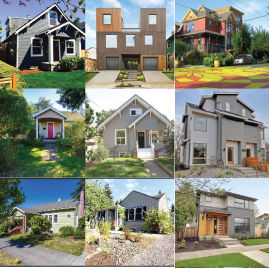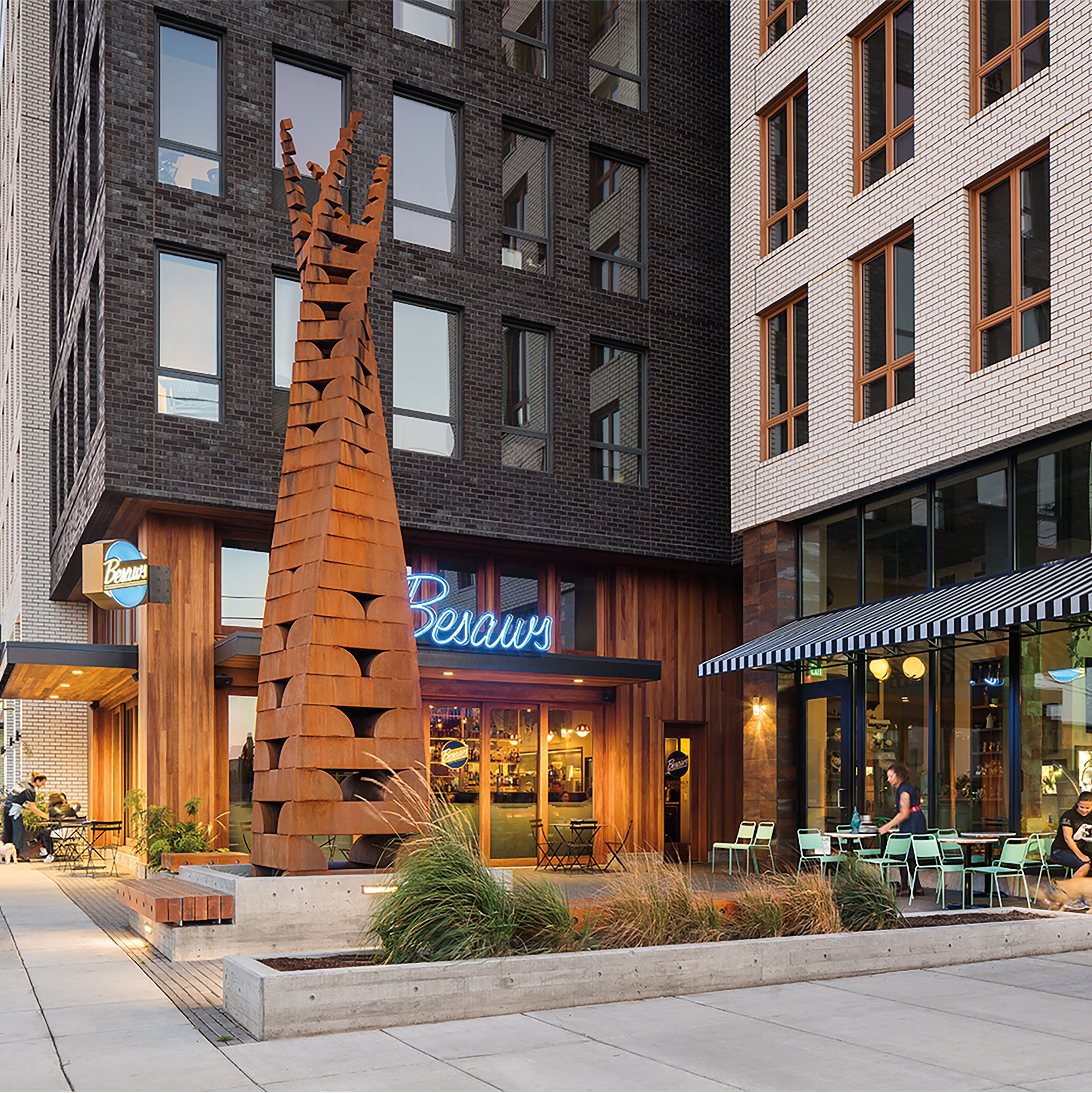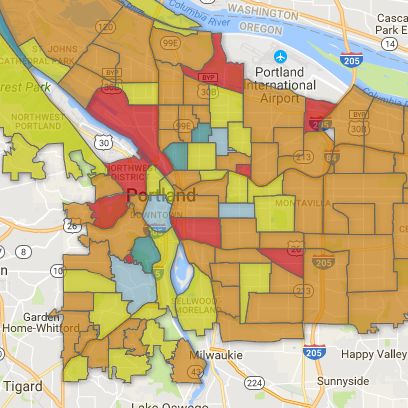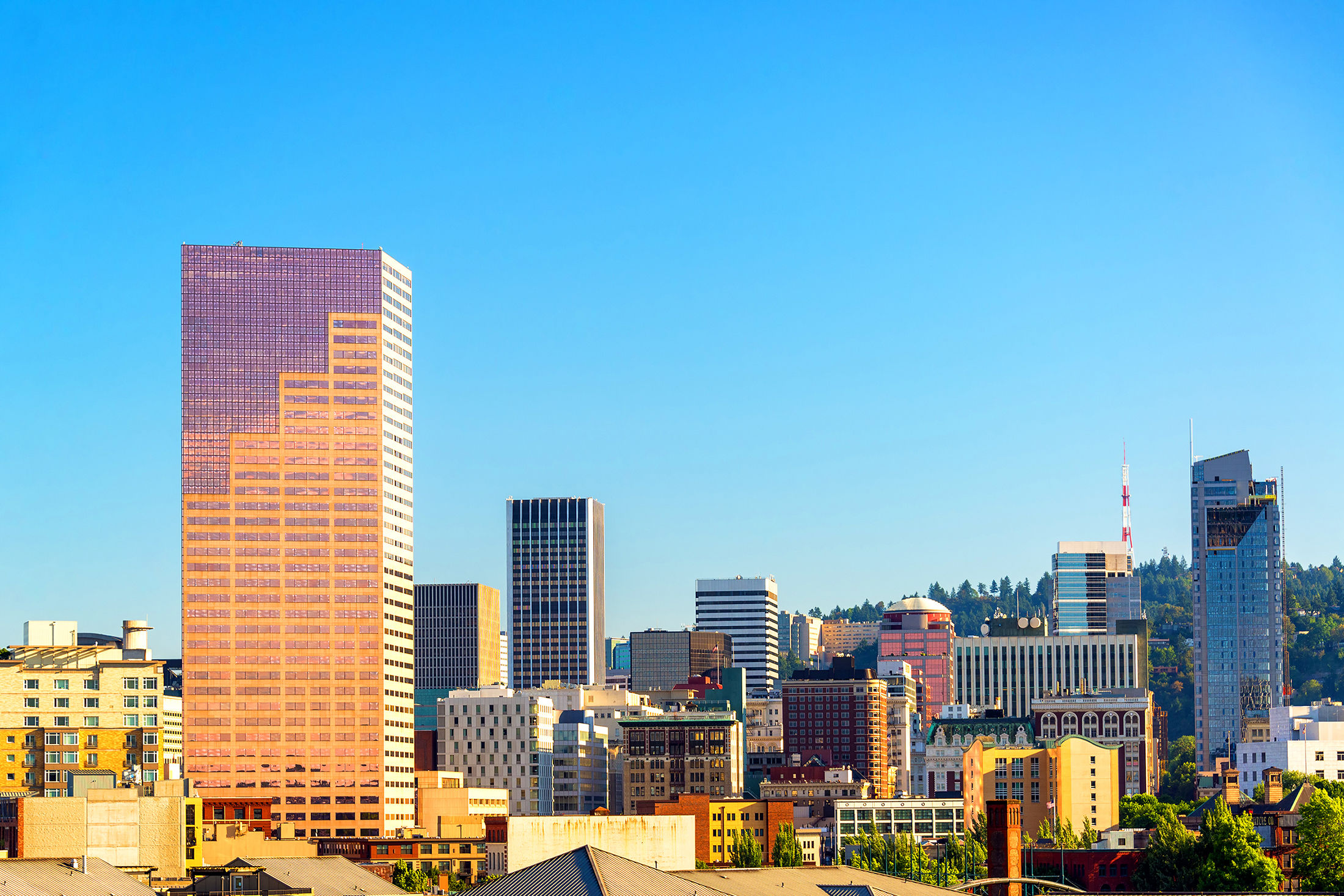How New Buildings Can Use Portland's Ultra-Small Blocks to Save Our Urban DNA
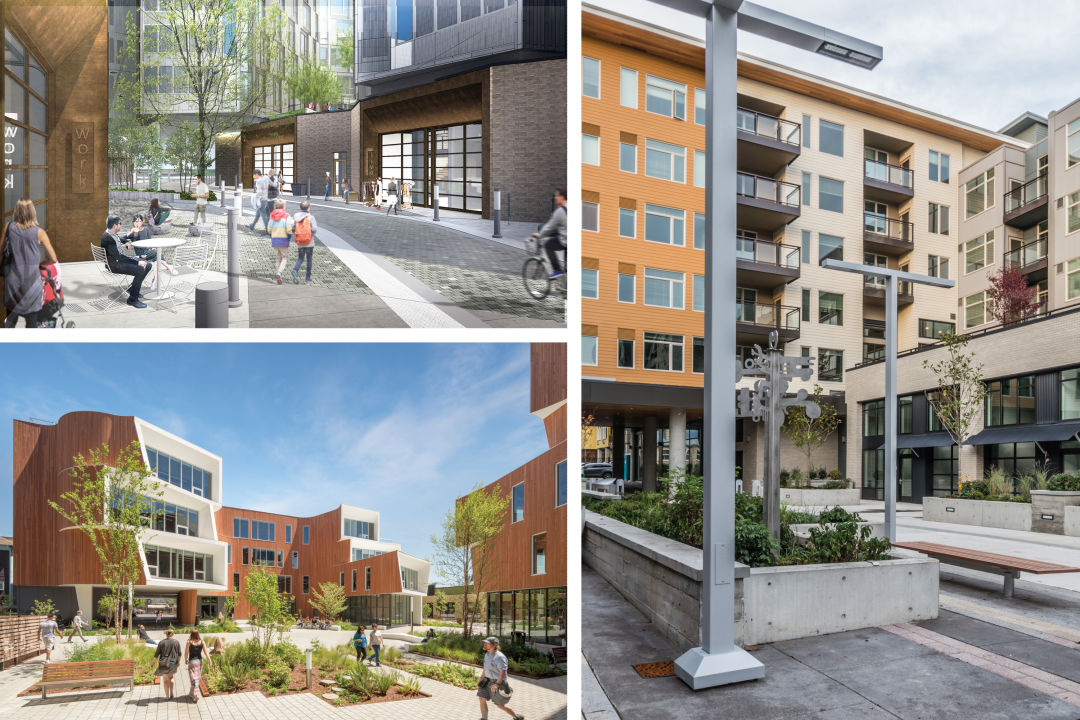
Clockwise from top left: 1400 Multnomah; Peloton; One North's courtyard adapts Portland's traditional street grid.
If Portland were a superhero, the city’s standard ultra-small blocks would be its radioactive spider bite or escape pod from Krypton: the mythologized origin story, foundation for adventures to follow. At 200 feet by 200 feet, our blocks create a street grid tighter than those of most American cities, a characteristic often credited with fostering the city’s vaunted walkability and vitality.
Buy the metaphor? Cool. Today, our hero (Portland, remember) faces its greatest foe, as rampant development and rising costs challenge its very soul. Which plotline will prevail? Will Portland’s cityscape slide into anonymity and bland sterility, overwhelmed by large-scale projects? Or will its fine-grained character emerge victorious to bind New and Old Portland in quirky harmony?
Those small blocks might be the decisive factor.
The 200-foot size dates to downtown’s original layout in 1852, and explanations as to why our blocks were born so small range from a desire for abundant, lucrative corner lots to the personal preference of a founder’s wife. In the 1960s, after the Lloyd District took shape around car-centric superblocks, a city zoning change required large new developments to conform to the small-blocks template. The pedestrianized Pearl District stretches of NW Irving and Kearney Streets are among the results.
Now, some of the most prominent projects in a rapidly rebuilding city are adapting the Lilliputian Portland block to new uses. The Lloyd-area development Hassalo on Eighth, finished in 2015 on a quadruple-size parking lot along NE Multnomah, takes its name from a street it resurrected and repurposed as a pedestrian-friendly plaza. Slicing through the middle of what’s now the largest apartment complex in Oregon, the reborn NE Hassalo Street breaks the development into 200-by-200-foot chunks, giving it a familiar scale and providing plenty of ground-floor frontage for lobbies, retail, and other amenities.
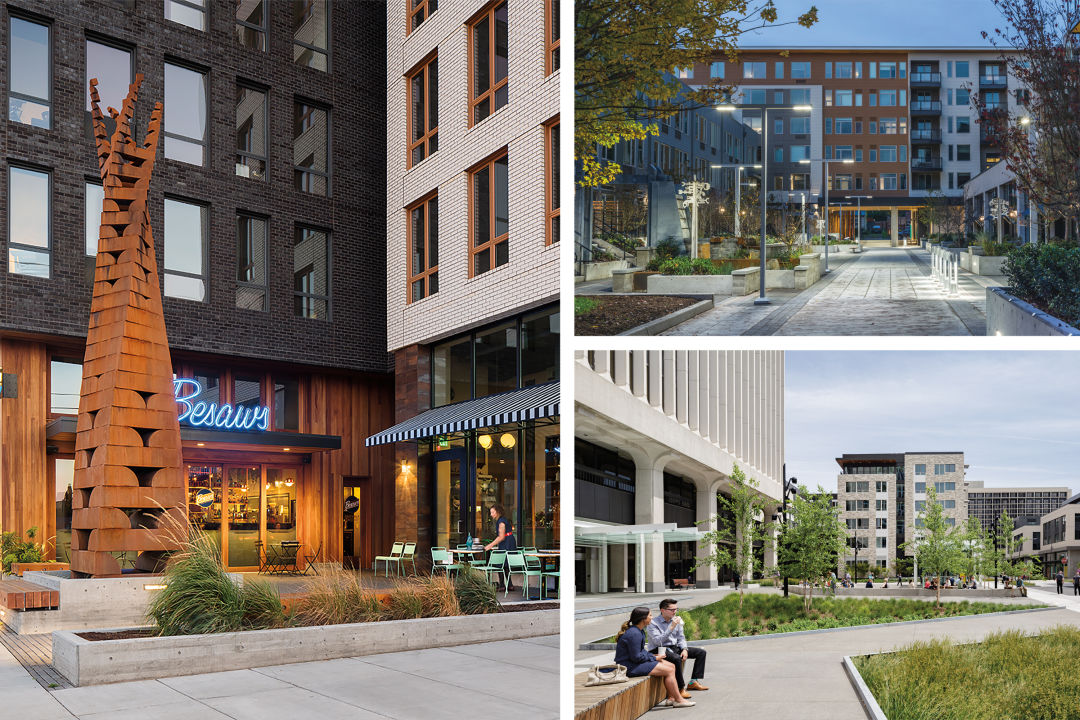
Clockwise from left: small, blocks-friendly developments L.L. Hawkins; Peloton; Hassalo on Eighth.
Along N Williams, the Peloton Apartments occupy another superblock, but developers brought back small-block scale by creating a pedestrian-friendly alleyway called a woonerf (it’s Dutch), with landscaping, street furniture, and, opening onto it, live/work units. Gus Baum, director of Peloton developer Security Properties, explains that units facing the woonerf rented quickly; one neighbor was so inspired by the new little street, she started a crowdfunding campaign to improve other alleyways from the Peloton three blocks down to N Beech Street.
Perhaps the most forward-looking adaptation of Portland’s age-old grid, though, will inform the multiuse development slated to replace the large parking lot next to Lloyd Cinemas. Taking inspiration from a diagonal walkway currently dividing the lot, architects at local firm Holst propose breaking from the standard square grid, and mimicking this path as a pedestrian walkway, fronted by shops, restaurants, and live/work spaces. It’s not a 200-foot grid, but the underlying conceit—comfortable, walkable public space as the greatest of all amenities—is pure, vintage Portland.
The result offers a new twist on an old idea: a human-scale city, variegated and vibrant, but skewed by 45 degrees. Origin stories often foretell later victories, but the path is rarely a straight one.

